
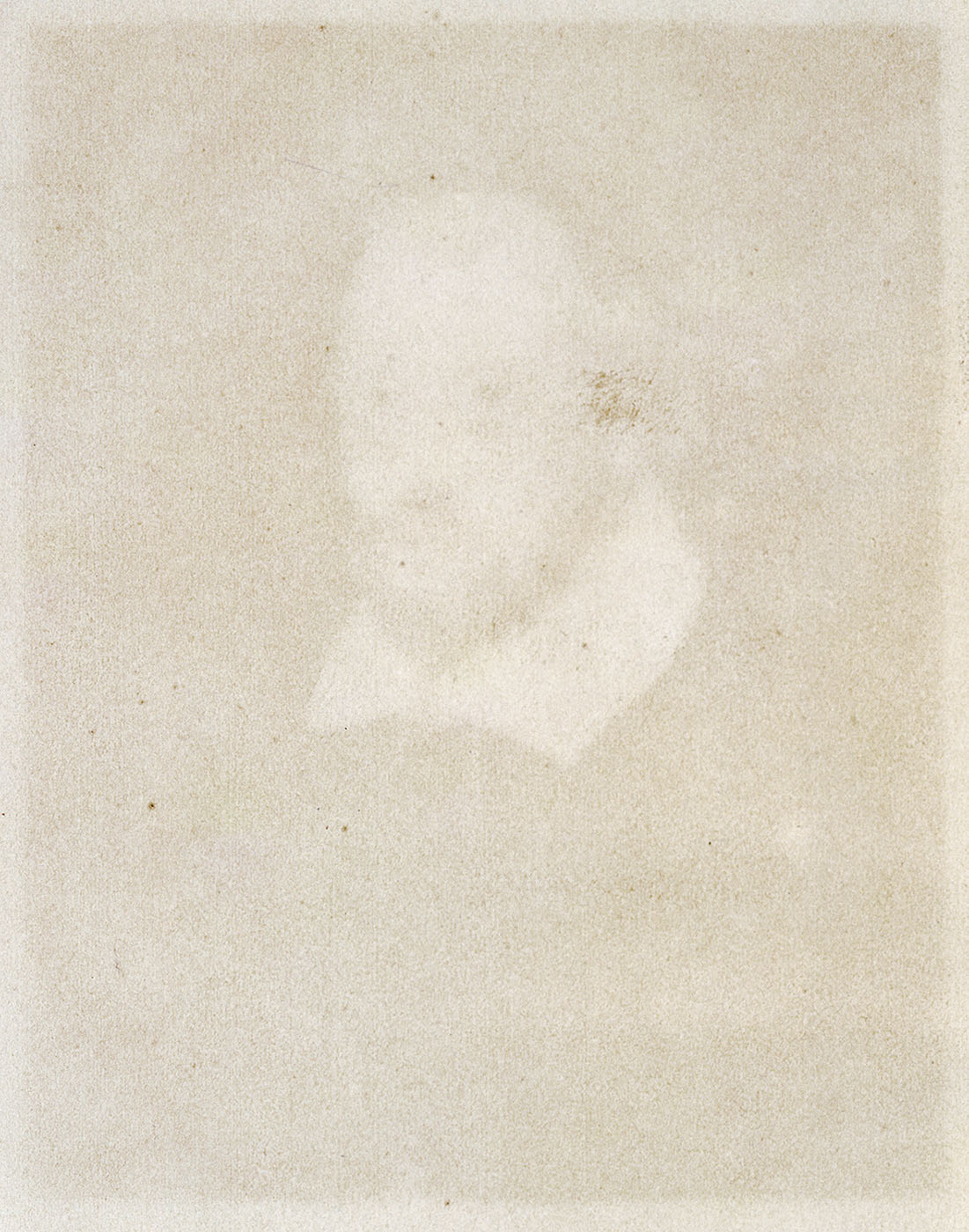
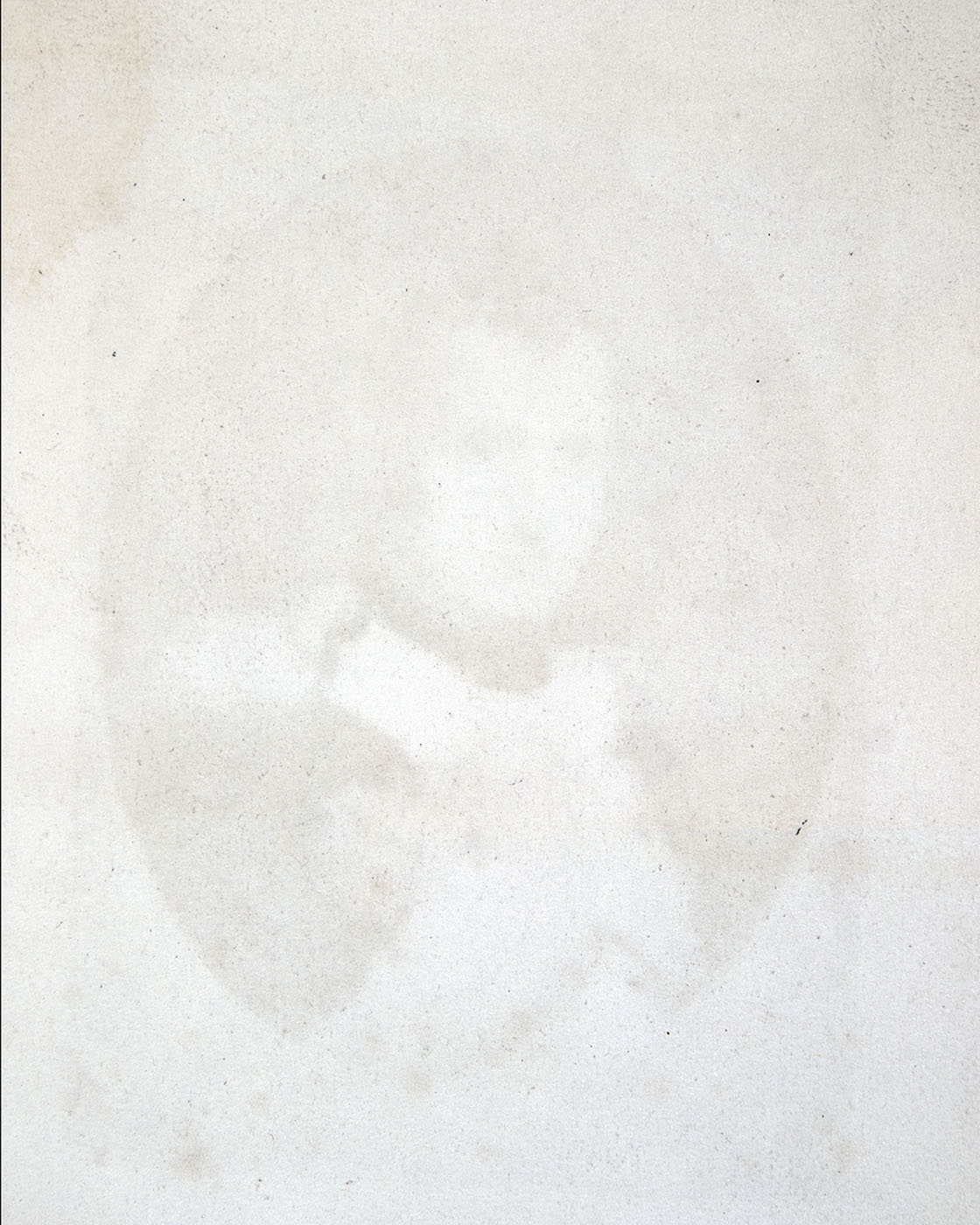
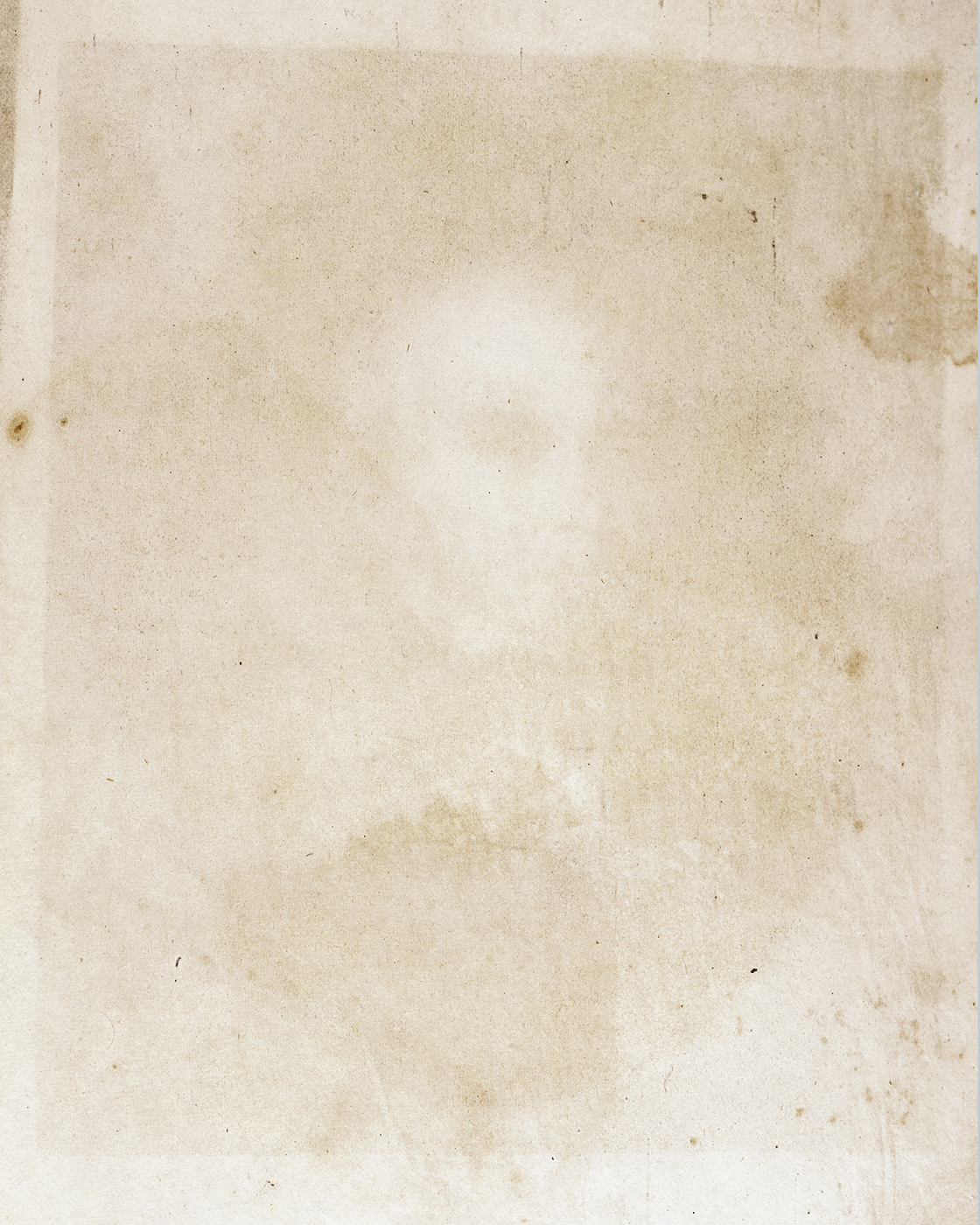
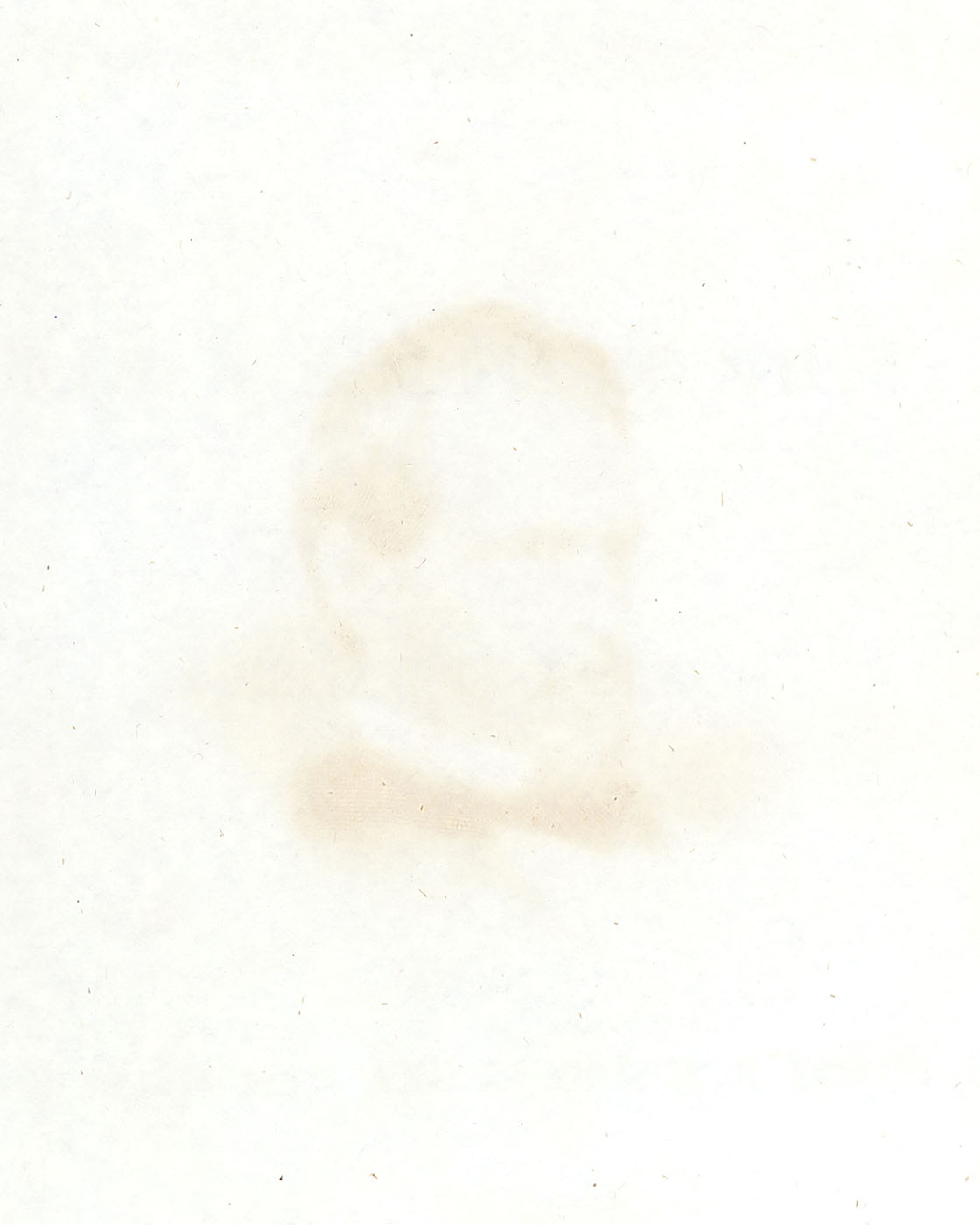
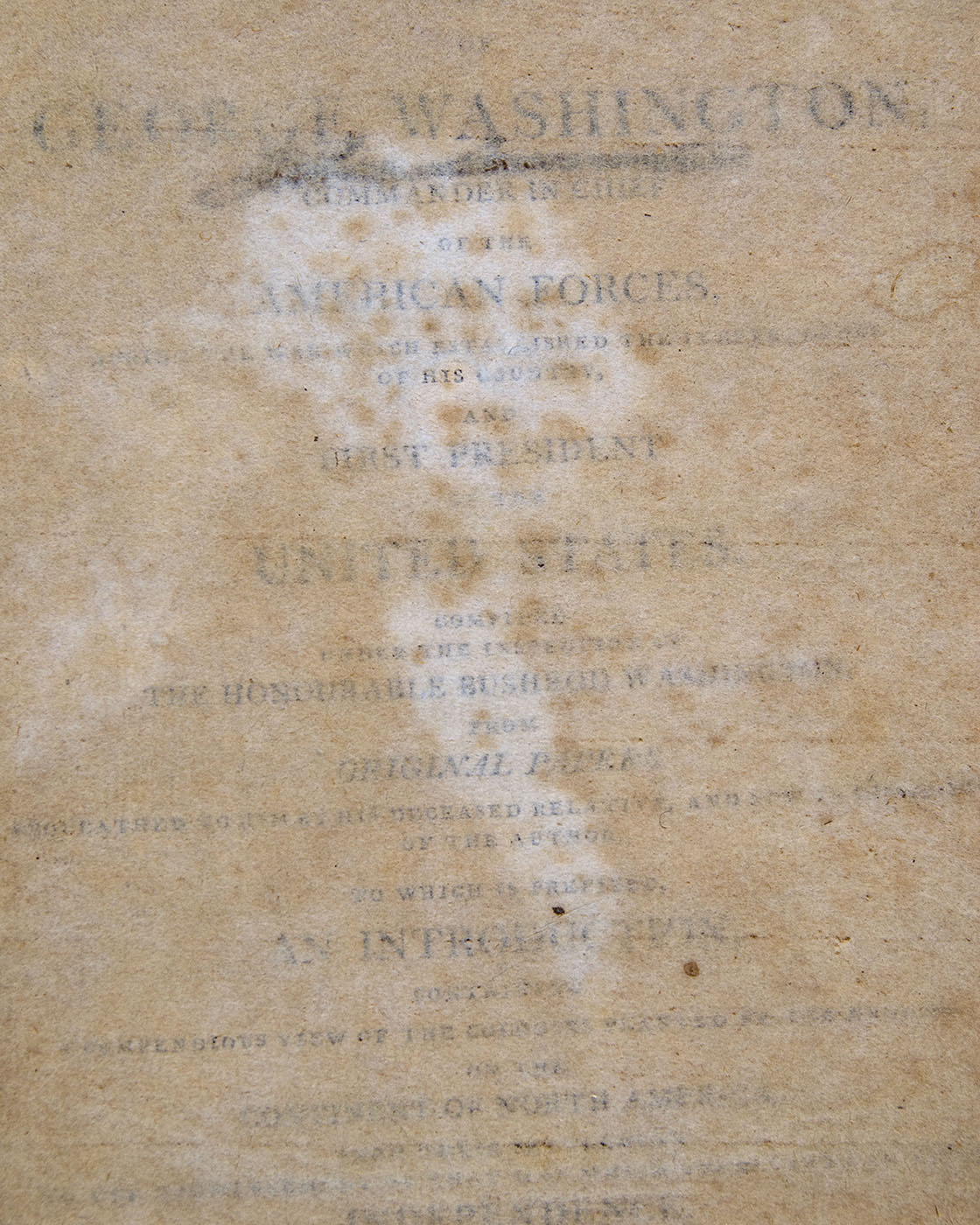

Artist's Statement
Thomas Gearty
A few years ago, I received a volume of Shakespeare’s collected works, published in 1865. Like many books from the period, it includes a frontispiece—a portrait of Shakespeare opposite the title page. This Shakespeare is fully familiar: pointed beard and receding hair; a bit stolid in his wide, white collar; glancing from the corner of his eyes as he partially turns towards, or possibly away. We know him.
But the book contains another Shakespeare, one less familiar and yet, perhaps, more true. Through time and pressure, ink from the engraving has seeped into the adjacent page, imprinting a copy. The original portrait of Shakespeare is as clear as a cliché; this secondhand Bard is a shadow, the likeness of a likeness, insubstantial and indistinct.
I have searched the shelves of libraries and archives for more of these impressions, building a roster of presidents and generals, famous authors and celebrated scientists, royalty and luminaries of their time. These images are imperfect likenesses, but they may be more accurate portraits. We conflate visual familiarity and knowledge: we stare at a photograph of Abraham Lincoln and feel certain of his sorrows. But what we can truly know of him and other figures from history more closely resembles these book marks—secondhand, faded, and obscured by the passage of time.
This project, “Book Marks,” is a collection of these happenstance portraits, a proposition on the nature of portraiture and memory, and part of a series of inquiries commenting on the claims, limits, and aspirations of photography.


